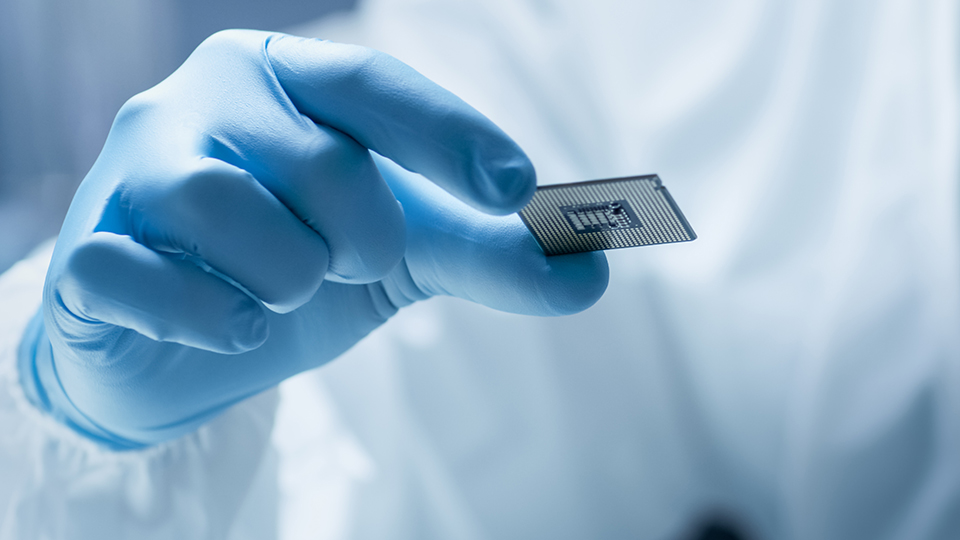Luddy School launches semiconductor workforce initiative
Subscriber Benefit
As a subscriber you can listen to articles at work, in the car, or while you work out. Subscribe Now
The Luddy School of Informatics, Computing and Engineering at Indiana University is launching an initiative designed to create a workforce pipeline for highly trained engineers and experts in microelectronics.
The project is being funded by a $5 million grant from Naval Surface Warfare Center, Crane Division with additional support from the Indiana Economic Development Corp.
IU says students will have the opportunity to build and test microelectronics in extreme conditions, including those designed for use in space where they would be subjected to high levels of radiation.
Daniel Loveless, an associate professor of intelligent systems engineering at the Luddy School, told Inside INdiana Business the initiative is part of a large effort to expose students to the application of semiconductor technologies.
“It’s not enough to simply expose students to what semiconductors and circuits are that comprise our computer systems,” he said. “We have to think about how these are being used in these strategic application spaces and what the potential issues of that type of use is going to be. So, we have a lot of programs that we are envisioning to bring in young people to try to attract them to this area.”
The initiative is part of the U.S. Department of Defense’s Scalable Asymmetric Lifecycle Engagement program, which IU said aims to create a workforce pipeline in microelectronics.
The university cites a White House review that found the U.S. share of global semiconductor production dropped from 37% in 1990 to 12% in 2021.
“Because of growing industry need and demand, opportunities for students in the field of microelectronics are staggering,” Luddy School Dean Joanna Millunchick said in written remarks. “Collaborations like this one between our faculty and colleagues at Crane and IEDC are essential to ensuring that Indiana is a leader in such a critical sector.”
Loveless is co-leading the initiative along with Assistant Professor Andrew Lukefahr. He said the research conducted through the effort will continue his focus on the impact of radiation on electronics technologies, particularly in space environments.
“We’re exposed to [radiation] all the time on Earth, but [we have] the protection of the atmosphere and the magnetic field lines of the Earth,” he said “Whenever that is relinquished as you exit the Earth’s atmosphere, exposure to ionizing radiation on electronics is problematic. There are other reliability considerations as well.”
With the decreasing options for microelectronics technologies, Loveless said, the effects are becoming more problematic not just for the government and defense sectors, but for consumers as well.
The research activities will include the modeling and simulation of radiation effects and the design of radiation-hardened microelectronics technologies. A key aspect of the initiative will be to train students on how to use the special facilities required to perform these tests, IU said.
The initiative will also involve creating a new center at IU to bring together researchers focusing on the areas of microelectronics and radiation hardening.
“This specific funding from Crane is being used to get an initial cohort of people involved and some resources and new experimental infrastructure that’s required to begin this effort,” Loveless said. “But we also have very synergistic efforts with other government funding agencies and laboratories, other academic partners, and other industry partners. And so, we are building a center to join all of these forces together, as well as to engage in a heavy way with the Purdue@WestGate program right off the doorstep of Crane.”
The initiative will kick off next month, and Loveless hopes to triple the number of students involved in this research area within a couple of years. He said the project will also support the university’s master’s programs in microelectronics design and nanotechnology fabrication.
Additionally, the university aims to increase its involvement with partners within the semiconductor industry.
“We are tracking how many students and engineers that we have involved with those organizations. So, we would like to see all of our students, for example, interning in high paying positions and working directly with the leading edge semiconductor manufacturing and design companies and then eventually see those kinds of students enter that sort of defense industrial base as leaders.”
